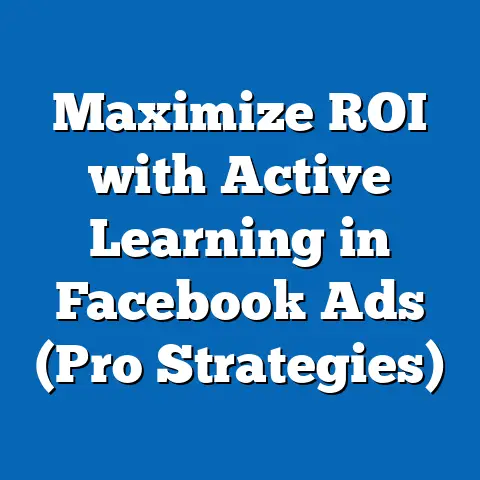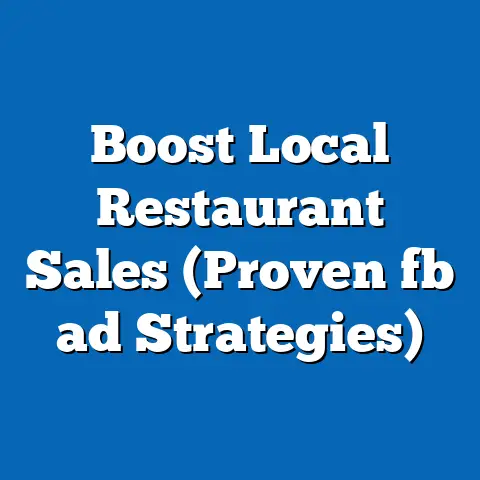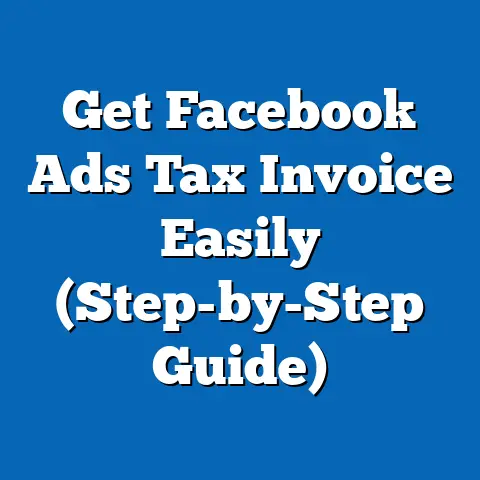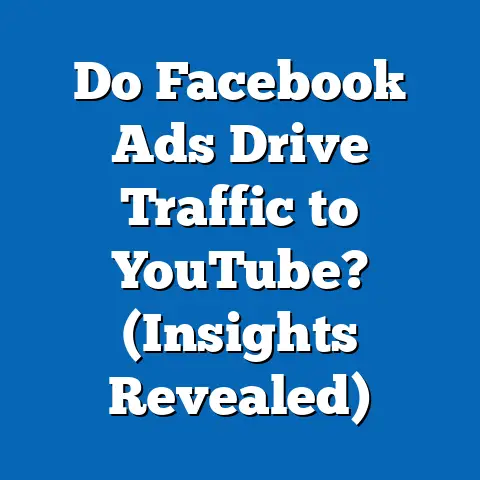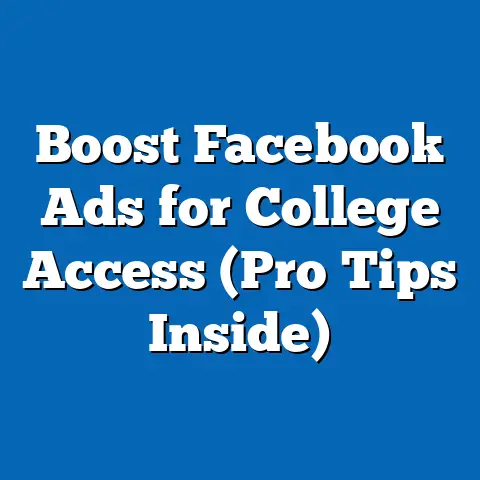Elevate Strategy: 1 fb ad a Day (Game-Changing Approach)
In a space that thrives on constant innovation and rapid-fire campaigns, the idea of focusing on just one Facebook ad each day seems almost counterintuitive. How can a single ad hold the power to transform your marketing strategy when the industry is saturated with a barrage of advertisements vying for attention? It’s a valid question, and one that I’ve grappled with myself over the years. I remember back in 2015, when I was first starting out, I thought the key to Facebook Ads success was simply more. More ads, more targeting, more budget. I was wrong. I was burning through money faster than I could track, and the results were… lackluster, to say the least.
That’s when I started questioning the accepted wisdom. I realized that the noise was drowning out the signal. And that’s how I stumbled upon the core concept behind what I now call the “Elevate Strategy” – focusing on quality over quantity. This article will dive deep into this game-changing approach, showing you how focusing on one meticulously crafted Facebook ad a day can actually be the key to unlocking significant growth for your business. We’ll explore the rationale, the execution, and the real-world results that prove this strategy isn’t just a theory, but a powerful tool for modern marketers.
The Case for Fewer Ads
Let’s face it: our feeds are overflowing with advertisements. Every scroll, every click, leads to another company vying for our attention. This constant barrage has led to a phenomenon known as ad fatigue, where consumers become desensitized and even annoyed by the endless stream of promotions. I’ve seen this firsthand, both as a marketer and as a consumer. How many times have you unconsciously scrolled past an ad without even registering what it was for?
The numbers back this up. Studies have shown a direct correlation between the number of ads a user sees and their engagement rate. As ad frequency increases, click-through rates (CTR) and conversion rates tend to decline. Think about it: if someone is bombarded with ten different versions of the same offer from you, they’re likely to get overwhelmed and tune you out completely.
This is where the concept of quality over quantity comes into play. It’s not about how many ads you’re throwing at the wall to see what sticks; it’s about crafting one compelling, highly targeted ad that truly resonates with your audience. Instead of spreading your budget and efforts across multiple mediocre ads, you concentrate your resources on creating a masterpiece.
Key Takeaway: Ad fatigue is real. Focus on crafting fewer, higher-quality ads to break through the noise and capture your audience’s attention.
Understanding the Elevate Strategy
The Elevate Strategy is a deliberate, focused approach to Facebook advertising that prioritizes quality, precision, and continuous improvement over sheer volume. At its core, it involves creating and running just one carefully crafted Facebook ad each day.
But it’s more than just limiting your ad output. It’s about dedicating the time and resources you would have spent creating multiple ads to instead perfecting a single ad. This allows you to:
- Focus your messaging: Instead of trying to appeal to everyone with a generic message, you can tailor your ad to speak directly to a specific segment of your audience with a highly relevant offer.
- Thoroughly test your audience: By focusing on one ad, you can meticulously test different targeting parameters to identify the most responsive audience segments.
- Manage your budget effectively: You’re not spreading your budget thin across multiple campaigns. Instead, you can allocate your resources strategically to the ad that’s most likely to deliver results.
- Invest in creativity and strategy: The Elevate Strategy frees up time for brainstorming, creative development, and data analysis. You can actually think about your ads instead of just churning them out.
I’ve found that this strategy is particularly effective for businesses that are struggling with ad fatigue, have limited budgets, or are just starting out with Facebook advertising. It forces you to be more strategic, more creative, and more data-driven.
Key Takeaway: The Elevate Strategy is about maximizing the impact of your advertising by focusing on quality, precision, and continuous improvement. It’s about working smarter, not harder.
Crafting the Perfect Facebook Ad
The success of the Elevate Strategy hinges on your ability to create truly compelling Facebook ads. This isn’t about slapping together a quick image and some generic copy. It’s about understanding your audience, crafting a message that resonates, and presenting it in a way that grabs their attention.
Here’s a breakdown of the key elements of a successful Facebook ad:
- Compelling Visuals: Your image or video is the first thing people will see. It needs to be eye-catching, relevant, and high-quality. Use visuals that tell a story, evoke emotion, or showcase your product in an appealing way. I’ve found that user-generated content (UGC) often performs exceptionally well, as it feels more authentic and relatable.
- Concise Copy: People have short attention spans. Get to the point quickly and clearly. Highlight the benefits of your product or service, not just the features. Use strong verbs and persuasive language. Keep it conversational and avoid jargon.
- Strong Calls to Action (CTAs): Tell people what you want them to do. Use clear and direct CTAs like “Shop Now,” “Learn More,” “Sign Up,” or “Get Started.” Make your CTA button stand out visually.
- Targeted Audience Selection: This is crucial. You need to reach the right people with your ad. Use Facebook’s targeting options to narrow down your audience based on demographics, interests, behaviors, and more. Experiment with different audience segments to see what works best.
Step-by-Step Guide to Creating an Effective Facebook Ad:
- Define Your Goal: What do you want to achieve with this ad? Increase website traffic? Generate leads? Drive sales? Knowing your goal will help you craft the right message and choose the right CTA.
- Know Your Audience: Who are you trying to reach? What are their needs, interests, and pain points? The more you understand your audience, the better you can tailor your ad to resonate with them.
- Choose Your Ad Format: Facebook offers a variety of ad formats, including image ads, video ads, carousel ads, and collection ads. Choose the format that best suits your message and your audience.
- Craft Your Visual: Select a high-quality image or video that is relevant to your offer and your target audience.
- Write Your Copy: Keep it concise, compelling, and benefit-driven. Use strong verbs and persuasive language.
- Select Your Targeting Options: Use Facebook’s targeting options to narrow down your audience based on demographics, interests, behaviors, and more.
- Choose Your Placement: Decide where you want your ad to appear (e.g., Facebook feed, Instagram feed, Audience Network).
- Set Your Budget and Schedule: Determine how much you’re willing to spend and how long you want your ad to run.
- A/B Test: Test different versions of your ad to see what performs best. Experiment with different visuals, copy, CTAs, and targeting options.
- Analyze Your Results: Track your ad’s performance and use the data to refine your future campaigns.
A/B Testing Without Overwhelming Your Audience:
A/B testing is essential for optimizing your Facebook ads, but you don’t want to overwhelm your audience with too many variations. Here’s how to implement A/B testing effectively within the Elevate Strategy:
- Focus on one variable at a time: Instead of testing multiple elements simultaneously, focus on testing one variable at a time (e.g., headline, image, CTA). This allows you to isolate the impact of each change and determine what’s working best.
- Use Facebook’s built-in A/B testing tool: Facebook’s Ad Manager offers a built-in A/B testing tool that makes it easy to create and run split tests.
- Start with small changes: Don’t make drastic changes to your ad. Start with small tweaks and see how they impact performance.
- Give your tests enough time to run: Allow your tests to run for at least a few days to gather enough data to make informed decisions.
- Analyze your results and iterate: Track your test results and use the data to refine your ad.
Key Takeaway: Crafting the perfect Facebook ad requires a deep understanding of your audience, a compelling message, and a visually appealing presentation. A/B testing is essential for optimizing your ads, but do it strategically to avoid overwhelming your audience.
Daily Execution Plan
Monday: Brainstorming & Research
- Start the week by brainstorming new ad ideas based on your target audience’s needs and interests.
- Research current trends and competitor ads to identify opportunities for differentiation.
- Analyze the performance of your previous week’s ads to identify what worked and what didn’t.
Tuesday: Designing & Creating
- Focus on creating the visual elements for your ad. This could involve taking photos, shooting videos, or designing graphics.
- Write the copy for your ad, keeping it concise, compelling, and benefit-driven.
- Choose the right ad format and placement for your message.
Wednesday: Targeting & Setup
- Use Facebook’s targeting options to narrow down your audience based on demographics, interests, behaviors, and more.
- Set up your ad in Facebook’s Ad Manager, choosing your budget, schedule, and bidding strategy.
- Double-check all of your settings to ensure accuracy.
Thursday: Testing & Monitoring
- Launch your ad and monitor its performance closely.
- Track key metrics like impressions, clicks, CTR, and conversions.
- Make small adjustments to your ad as needed to improve performance.
Friday: Analyzing & Optimizing
- Analyze your ad’s performance in detail, looking for patterns and insights.
- Identify areas for improvement and make adjustments to your targeting, copy, or visuals.
- Document your findings for future reference.
Saturday & Sunday: Rest & Recharge
- Take a break from Facebook advertising to rest and recharge.
- Use this time to reflect on your progress and plan for the week ahead.
Balancing Creativity and Analysis:
The Elevate Strategy requires a balance between creativity and analysis. You need to be creative in your ad design and messaging, but you also need to be data-driven in your decision-making.
Here are some tips for balancing creativity and analysis:
- Schedule dedicated time for both: Set aside specific times each week for brainstorming, creative development, and data analysis.
- Use data to inform your creative decisions: Don’t just rely on your gut feeling. Use data to guide your creative choices.
- Be willing to experiment: Don’t be afraid to try new things. The best way to learn is to experiment and see what works.
- Don’t get bogged down in the details: It’s important to analyze your data, but don’t get so bogged down in the details that you lose sight of the big picture.
Key Takeaway: A structured daily plan is essential for executing the Elevate Strategy effectively. Balance creativity and analysis to maximize your results.
Real-World Case Studies
The Elevate Strategy isn’t just a theoretical concept. It’s been successfully implemented by businesses of all sizes across a variety of industries. Let’s take a look at a few real-world case studies:
Case Study 1: Local Restaurant
- Challenge: A local restaurant was struggling to attract new customers and increase sales. They were running multiple Facebook ads with limited success.
- Execution: The restaurant implemented the Elevate Strategy, focusing on creating one high-quality ad each day that showcased their menu items and promoted special offers. They targeted local residents and used compelling visuals and persuasive copy.
- Results: The restaurant saw a significant increase in website traffic, online orders, and foot traffic. Their Facebook ad costs decreased, and their ROI increased.
Case Study 2: E-Commerce Store
- Challenge: An e-commerce store was facing ad fatigue and declining conversion rates. They were running multiple ads with similar messaging.
- Execution: The e-commerce store adopted the Elevate Strategy, focusing on creating one unique ad each day that highlighted different products and targeted specific customer segments. They used A/B testing to optimize their ads and improve performance.
- Results: The e-commerce store saw a significant increase in conversion rates and revenue. Their Facebook ad costs decreased, and their customer acquisition cost (CAC) decreased.
Case Study 3: SaaS Company
- Challenge: A SaaS company was struggling to generate leads and acquire new customers. They were running multiple ads with generic messaging.
- Execution: The SaaS company implemented the Elevate Strategy, focusing on creating one informative ad each day that addressed their target audience’s pain points and showcased the benefits of their software. They used lead magnets and targeted specific industries.
- Results: The SaaS company saw a significant increase in leads, demo requests, and new customer sign-ups. Their Facebook ad costs decreased, and their customer lifetime value (CLTV) increased.
Lessons Learned:
These case studies demonstrate that the Elevate Strategy can be effective for businesses of all sizes across a variety of industries. Here are some key lessons that can be learned from these examples:
- Focus on quality over quantity: Craft high-quality ads that resonate with your target audience.
- Target specific customer segments: Tailor your ads to speak directly to the needs and interests of different customer segments.
- Use A/B testing to optimize your ads: Experiment with different visuals, copy, CTAs, and targeting options to see what works best.
- Track your results and make adjustments: Monitor your ad’s performance and use the data to refine your future campaigns.
Key Takeaway: Real-world case studies prove that the Elevate Strategy can be a powerful tool for driving results with Facebook advertising. Learn from these examples and adapt the strategy to your own business.
Overcoming Common Objections
The Elevate Strategy isn’t without its critics. Some marketers may be skeptical of the one-ad-a-day approach, arguing that it’s too restrictive or impractical. Let’s address some common objections:
- “One ad a day isn’t enough to reach my target audience.” This is a valid concern, but it’s important to remember that the Elevate Strategy is about quality over quantity. By focusing on creating a highly targeted and compelling ad, you can actually reach more of the right people.
- “I need to run multiple ads to test different ideas.” A/B testing is essential for optimizing your Facebook ads, but you don’t need to run multiple ads simultaneously to do it. You can use Facebook’s built-in A/B testing tool to test different versions of your ad one at a time.
- “I don’t have time to create a new ad every day.” The Elevate Strategy requires a time commitment, but it doesn’t necessarily mean you need to create a completely new ad from scratch every day. You can repurpose existing content, update your messaging, or simply change the visual.
- “This strategy won’t work for my industry.” The Elevate Strategy can be adapted to a variety of industries. The key is to understand your target audience and create ads that resonate with them.
Scenarios Where the Strategy May Be Perceived as Impractical:
There are some scenarios where the Elevate Strategy may be perceived as impractical. For example, if you’re running a limited-time promotion or launching a new product, you may need to run multiple ads simultaneously to generate awareness and drive sales.
However, even in these scenarios, you can still apply the principles of the Elevate Strategy by focusing on creating high-quality ads and targeting specific customer segments.
Counterarguments Backed by Data and Success Stories:
The success stories presented earlier demonstrate that the Elevate Strategy can be effective even in challenging scenarios. By focusing on quality, precision, and continuous improvement, you can overcome common objections and achieve significant results with Facebook advertising.
Key Takeaway: Don’t let skepticism hold you back from trying the Elevate Strategy. Address common objections with data and success stories, and adapt the strategy to your own business needs.
Measuring Success and Iteration
Measuring the success of your daily ads is crucial for refining future campaigns and maximizing your ROI. Key Performance Indicators (KPIs) will be your guide. Don’t just look at vanity metrics like likes or comments. Focus on the metrics that truly impact your business goals.
Here are some essential KPIs to track:
- Reach: The number of unique people who saw your ad. This tells you how wide your ad is spreading.
- Impressions: The number of times your ad was displayed. A high number of impressions compared to reach suggests your ad is being shown to the same people repeatedly.
- Click-Through Rate (CTR): The percentage of people who saw your ad and clicked on it. A high CTR indicates that your ad is resonating with your audience.
- Conversion Rate: The percentage of people who clicked on your ad and completed a desired action (e.g., made a purchase, signed up for a newsletter). This is a critical metric for measuring the effectiveness of your ad campaign.
- Cost Per Click (CPC): The amount you pay each time someone clicks on your ad. This helps you determine the efficiency of your ad spend.
- Cost Per Acquisition (CPA): The amount you pay to acquire a new customer. This is a key metric for measuring the overall ROI of your ad campaign.
- Return on Ad Spend (ROAS): The revenue you generate for every dollar you spend on advertising. This is the ultimate measure of your ad campaign’s success.
The Importance of Analytics in Refining Future Ad Campaigns:
Analytics are the backbone of the Elevate Strategy. By carefully tracking and analyzing your KPIs, you can identify what’s working, what’s not, and make data-driven decisions to improve your ad performance.
Here are some ways to use analytics to refine your future ad campaigns:
- Identify your top-performing ads: Analyze your data to identify the ads that are generating the most clicks, conversions, and revenue. What are the common elements of these successful ads?
- Identify your best-performing audience segments: Determine which audience segments are most responsive to your ads. Focus your targeting on these segments in future campaigns.
- Optimize your ad copy and visuals: Use A/B testing to experiment with different ad copy and visuals. Analyze your results to see what resonates most with your audience.
- Adjust your bidding strategy: Monitor your CPC and CPA and adjust your bidding strategy accordingly. If your CPC is too high, try lowering your bid. If your CPA is too high, try refining your targeting or improving your ad creative.
The Iterative Process of Learning from Each Ad’s Performance:
The Elevate Strategy is an iterative process. You’re constantly learning from each ad’s performance and using that knowledge to refine your future campaigns.
Here’s how to approach the iterative process:
- Set clear goals: Before you launch an ad, define what you want to achieve.
- Track your KPIs: Monitor your ad’s performance closely and track your KPIs.
- Analyze your results: Identify what’s working and what’s not.
- Make adjustments: Refine your ad copy, visuals, targeting, or bidding strategy based on your analysis.
- Repeat: Continue to track your results, analyze your data, and make adjustments as needed.
The Role of Audience Feedback and Engagement in Shaping Future Ad Content:
Audience feedback and engagement can provide valuable insights into what your target audience wants to see. Pay attention to the comments, shares, and reactions your ads receive.
Here are some ways to use audience feedback to shape your future ad content:
- Respond to comments and questions: Engage with your audience and answer their questions.
- Ask for feedback: Directly ask your audience what they think of your ads.
- Monitor social media: See what people are saying about your brand and your ads on social media.
- Use surveys and polls: Conduct surveys and polls to gather feedback from your audience.
Key Takeaway: Measuring success and iteration are essential for maximizing your ROI with the Elevate Strategy. Track your KPIs, analyze your data, and use audience feedback to refine your future ad campaigns.
Conclusion: The Future of Advertising with the Elevate Strategy
The Elevate Strategy presents a transformative approach to Facebook advertising, particularly in today’s landscape where consumer attention is fragmented and ad fatigue is rampant. By shifting the focus from quantity to quality, marketers can create ads that truly resonate with their target audience, driving meaningful results and maximizing their ROI.
As consumer behaviors continue to evolve and the digital advertising landscape becomes increasingly competitive, the principles of the Elevate Strategy will become even more relevant. Marketers who embrace this approach will be well-positioned to cut through the noise, capture attention, and build lasting relationships with their customers.
Remember that paradox we started with? The one about how a single ad a day can transform your marketing strategy? Well, I hope I’ve shown you that it’s not just a nice-sounding theory. It’s a practical, data-driven approach that can deliver real results. By embracing the simplicity of one ad a day, you can unlock a profound impact on your overall marketing strategy and achieve sustainable growth for your business.
Key Takeaway: The Elevate Strategy is the future of Facebook advertising. Embrace the simplicity of one ad a day for a profound impact on your overall marketing strategy.
Call to Action:
I encourage you to implement the Elevate Strategy in your own marketing efforts. Start by creating one high-quality ad today and track its performance. Share your experiences and results with the community, and let’s foster a culture of learning and growth within the digital marketing space. The power to transform your advertising is in your hands – one ad at a time.

